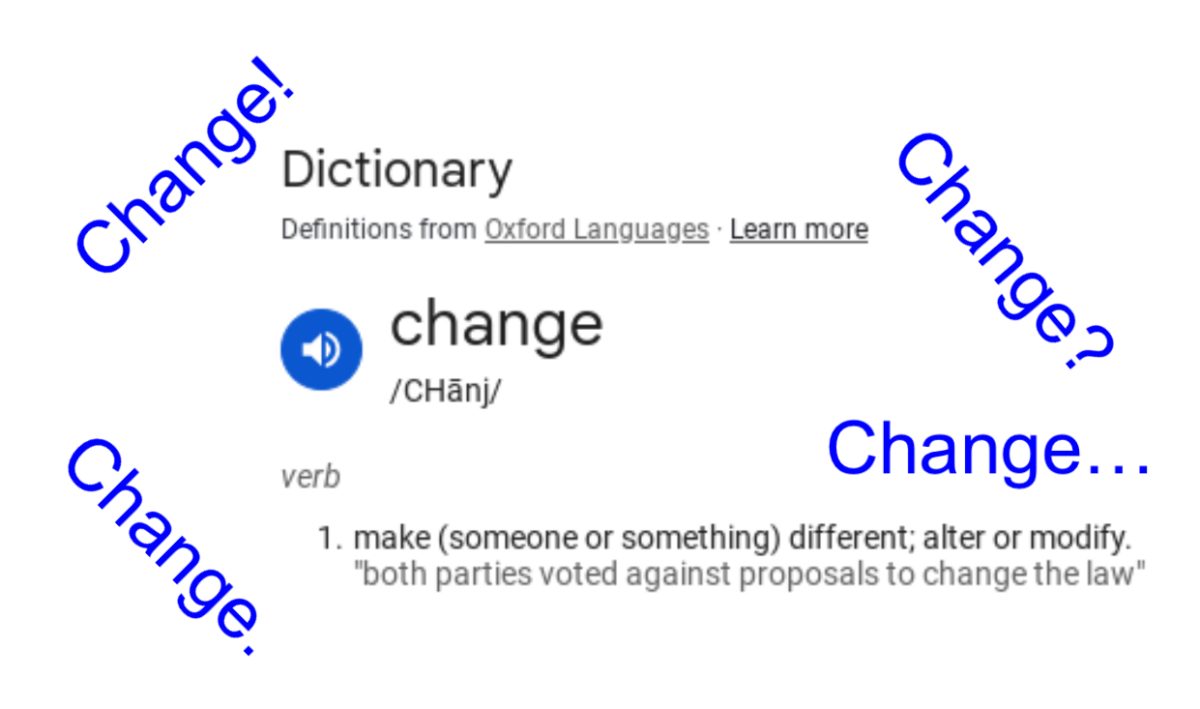When people think of subversive TV finales, they sometimes associate the word subversive with bad. However, the term subversive, as in a finale that subverts one’s expectations, just means a finale that surprises viewers, or goes against the grain. It does not mean that the finale in question must be substandard.
After all, some students and teachers don’t mind it when finales throw them for a loop, so long as they believe the subversion is executed well, fits the show in question, and works on the basic fronts, like acting, direction, structure, etc.
That said, whether someone will enjoy a subversive finale hinges not just on the nature of the episode, but their tolerance for deliberate breaks from conventions.
For his part, Community School of Davidson (CSD) American History teacher, Anthony Yodice, likes the finale of “Seinfeld” (1989), and is fine with the occasional bolt from the blue.
”Seinfeld” is a sitcom about four friends living in New York City.
“The finale of ‘Sienfield’ [sic] was unexpected, but the whole run of the show was unexpected and broke barriers,” Anthony Yodice said. ”The finale fit, even if it left a lot of viewers unsatisfied.”
However, CSD Yearbook and Media Productions teacher, Jennifer Chaffman, disagrees.
“I don’t think I loved the Seinfeld finale,” Jennifer Chaffman said. “I found them all being in jail was pretty unsatisfying. I’m not sure I’d call it terrible, but definitely not my taste.”
Still, Chaffman does not dislike the “Seinfeld” finale without qualifications.
“I did love [the] use of the Greenday song [“Good Riddance”] and think that it gave the song a big boost,” Chaffman said.
The finale is hated, due to its lack of humor, and some people dislike how the characters faced real life consequences for their actions. Still, as with other finales that took significant artistic risks, its reception has improved over time.
While liking the finale of “Seinfeld” may be an unpopular opinion, some subversive finales are less infamous.
Take the finale of “Angel” (1999). “Angel” is a spinoff of the teen drama “Buffy: the Vampire Slayer” (1997) and has a darker, more serious tone. In the finale of “Angel,” titled “Not Fade Away,” viewers do not get to see the outcome of the final battle between good and evil. The finale posits that the fight matters more than which side emerges victorious, successfully supporting one of the show’s key themes.
It’s also important to note that subversions are not exclusive to TV shows. For example, in the classic Japanese film “Ikiru” (1952), the protagonist dies near the movie’s halfway mark. The film then presents the last leg of the protagonist’s life through the stories his colleagues share about him, the banter, and the mixed opinions people have, concerning his life, legacy, and conflicts with authority.
Eliminating the main character of a movie around an hour before it is through is a subversion of expectations, but, in the case of “Ikiru,” the director, Akira Kurosawa, executes this perfectly.
Google results for “subversive finales”
Nevertheless, some of the first shows, if one Googles “subversive finales,” that appear are “How I Met Your Mother” (2005), “Sons of Anarchy” (2008), “The Sopranos” (1999), “Game of Thrones” (2011), and “Lost” (2004).
Out of those, the finales of “How I Met Your Mother,” “Game of Thrones,” and “Lost” are almost universally panned. The ending of “The Sopranos” is hotly debated, with opinions ranging from hatred to unqualified admiration.
“Game of Thrones” is a fantasy drama TV series based on the book series “A Song of Ice and Fire” by George R.R. Martin.
Yodice shares the popular opinion of the “Game of Thrones” finale.
“I don’t know that I would say it was ‘terrible,’ but I did not like the finale of ‘Game of Thrones’. (Spoiler) The dragon should have eaten John Snow [sic],” Yodice said.
What about the finale of “The Sopranos”?
“The Sopranos” is a crime drama following an Italian mobster that aired on HBO in the late ‘90s, and most of the aughts.
The finale of “The Sopranos” has grown in critical regard, and is a classic example of a subversive finale. The cut to black in the closing episode, “Made in America,” springs to mind for many people.
At the time, it caused mass confusion, and famously, some “Sopranos” viewers thought their VCRs were malfunctioning, rather than that the abrupt cut to black was a deliberate part of the episode.
However, upon critical reappraisal, the finale of “The Sopranos” has solidified its legendary status.
“The finale made the show and the characters feel more real,” Yodice said. “Life goes on, we don’t know what will happen next.”
Yet, while finales, as Yodice mentioned, can be excellent, not everybody watches them. It’s a common experience for people to lose interest in certain shows multiple seasons before they conclude.
CSD sophomore, Elena Cunningham (‘27) asserts that the constant deferral often found in TV shows is a pet peeve.
“Usually, I’ll stop watching a show if they try to hold me in suspense for too long. I can’t watch 3-5 seasons of a show if it’s all leading up to one surprise,” Elena Cunningham said. “It’s easier for me to keep watching a show if there are a lot of plot twists along the way.”
While this logic is generally sound, the trajectory of the show “Lost” demonstrates that ceaseless twists can be just as bad as shows that keep building without intermittent breaks from the larger arc.
“Lost” was a mystery box sci-fi program that followed a group of plane crash survivors who found themselves stranded on a tropical island. The approach of the show’s creators, where they moved from one story to another without resolving previous plot threads, frustrated viewers.
Critics, in retrospect, tend to be hard on the show.
David Auerbach, in an article titled “The Cosmology of Serialized Television,” called the premise of “Lost” a “drawn-out mythology tease,” and said that, “Driven ultimately by a none-too-bright faith-based agenda, Cuse and Lindelof [creators of “Lost”] ensured that the show will quickly be forgotten.”
The finale of “How I Met Your Mother” is as hated as the finale of “Lost,” but is considered more of an isolated incident.
“How I Met Your Mother” is a rom-com, where the father and protagonist, Ted, shares the story of how he met his children’s mother. The show is a frame story.
In the finale of “How I Met Your Mother,” the titular mother dies, and rather than allow this moment its full emotional power, the story jumps to the protagonist’s joyful reunion with his previous, will-they-won’t-they girlfriend.
By having the story end not with Ted meeting his children’s mother, but with him rekindling an old romance, the finale undermines the expectations viewers developed over the previous seasons.
Though the finale of “How I Met Your Mother” is controversial, that doesn’t mean the episode is unanimously disliked.
“I’ve heard people say that they didn’t like the way it [“How I Met Your Mother”] ended, and saw a Reddit [post] saying it was awful. But I (we, my husband and sons, too) remember liking it,” Chaffman said.
“I felt like the writers had to find a way to get him together with Robin once and for all, but also think that he worked so hard to find the Mother only to lose her again,” Chaffman said, “[which] was very sad.”
Of course, not everybody who watched “How I Met Your Mother” made it all the way to the series finale.
“I had already watched two seasons and learned nothing about who the mother was. I also felt like it got repetitive, with his kids always saying the story was long,” Cunningham said about her experience with “How I Met Your Mother.”
“I think the thing,” Cunningham said, “that finally did it for me was the main character’s friend [Marshall] and his fiance [Lily] breaking up. I loved them together, and was kind of watching for them at that point.”
As Cunningham said, just one saving grace, like the relationship between Marshall and Lily in “How I Met Your Mother,” can be powerful enough for one to continue watching a show of which they’re otherwise critical.
That is, if a show doesn’t remove its singular point of appeal for that person.
Not all subversive finales are letdowns
While there is a particular bias toward finales that were disastrous in the search results, some shows, like “The Prisoner” (1967) and “Angel,” prove that it is possible for finales to stir controversy and surprise people without sacrificing strong writing, direction, acting, etc.
“The Prisoner” is an influential 1960’s sci-fi show about an unnamed British secret agent, Number Six, who was abducted and imprisoned in a mysterious village. The show was cancelled after its first season. In fact, the creator constructed the series finale at the last second, which accounts for some of its messiness.
However, while it’s controversial, one could argue that the finale was good, overall. It did not provide a clean resolution, nor easy answers, and allowed for diverse interpretations.
The strongest scene is when Number Six is asked to present his views about authority and rebellion from behind a podium. He keeps trying to start the speech, but the audience members – all looking and behaving identically – will not stop interrupting him. They cheer over Number Six’s words, which angers and confuses him, showing the human tendency to cling onto charismatic figures without critical thought.
It challenges Number Six, who is known for his skepticism and rebellion, when people suddenly agree with him, without listening, understanding, or posing questions. In addition, the finale ends with Number Six’s flat door opening automatically, as in the Village, which suggests true freedom still eludes him.
The conclusion is thought-provoking, and leads to a number of interesting questions, regarding the nature of freedom and captivity in modern society.
What do people want in a finale?
Perhaps when mentioning both praised and lambasted finales, one should first define what constitutes a “good” finale.
Yodice volunteers his personal definition.
“It depends on the show, but, in general, if I invested years… [into] watching a show, I want it to be wrapped up and the characters to be happy at the end,” Yodice said.
Chaffman shares a similar definition.
“It might be kind of basic, but honestly, what I want in a series finale is for a good, tidy ending,” Chaffman said. “Good closure, something that won’t make me sad or wanting more. But I also want it to be memorable and entertaining.”
However, Cunningham highlights a complexity in judging television finales.
“Gilmore Girls [2000] was one show I watched all the way through, including the revival “A Year in the Life” [2016]. At the end of that [“A Year in the Life”], Rory tells her mom she is pregnant from her affair with Logan, a college boyfriend who is now engaged,” Cunningham said. “While this is consistent with Rory’s character, it wasn’t a great ending.”
This shows how even if a finale has one positive attribute, like behaviors that are in line with how a character is presented across a series, it can still fall short in other capacities.
That’s not to say that Cunningham disliked the “Gilmore Girls” overall.
“The rest of the show was good,” Cunningham said.
Of course, these criterias are debatable. “Deadwood” (2004) is a Western HBO drama. HBO cancelled the show, and the final episode of “Deadwood,” consequently, was more like a regular episode than a series closer. While it was controversial, the episode being normal, and without apparent closure, appeals to some people. Fans argue that the show just ending, without a tidy wrap-up, reflects how life often lacks clean resolutions.
In addition, the preference, shared by Yodice and Chaffman, for happy endings, is not universal. Plenty of shows have released bleak finales, after all, to critical acclaim, including, but not limited to, “The Prisoner.”
Yet, happy and tidy endings are nearly ubiquitous in TV finales, and there is nothing wrong with that, per se. Without these standard procedures, subversive finales, which are apt to take note of and defy storytelling conventions, could not, by definition, exist.
Chaffman likes one subversive finale.
“One of my favorite show endings of all time is from… Newhart [1982]. It was about a guy (Bob Newhart) and his wife who ran a bed & breakfast inn in Vermont. The series revolved around the quirky people in the town and guests,” Chaffman said.
This is not the only eponymous sitcom in which actor Bob Newhart starred.
“Bob Newhart had had a different show in the 70’s called “The Bob Newhart Show” [1972] where he was a therapist married to a woman named Emily, and the show revolved around their lives together,” Chaffman said.
What happened in the “Newhart” series finale?
“‘The Newhart Show’s’ series finale ended with Bob Newhart waking up in bed with the actress who’d played his wife in the earlier show [“The Bob Newhart Show”] and him telling her that he’d ‘just had the craziest dream,’” Chaffman said.
The aforementioned episode, as it happened, was the talk of the town.
“It was so unexpected and funny,” Chaffman said, “and something everyone was talking about the next day.”
Then again, with subversive finales, there’s always the risk of alienating audiences.
“I don’t think I liked the ending of a show called St. Elsewhere [1982]. It ended with the son (who had autism) staring into a snowglobe and it turned out the whole show had been his vision as he stared into the globe,” Chaffman said. “Unexpected, but also unsatisfying.”








